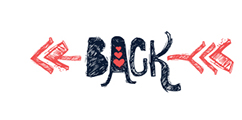Rebuilding Google Chat
A Ground-Up User-Centric Approach to Chatting and Sharing
After Hangouts had been around for awhile, a team within Google+ decided to break off and recreate an app that was focus solely on messaging without the complication that video brought to the whole experience. The audience was of a younger age and the point of the app was going to be playfulness from the ground up. Much of the Motion Brand for this app was going to be gestural based, fluid interaction models and simple navigation. Everything considered, from the chatlist to the way video was recorded, was to be modeled towards deeper and more intuitive interactions.
Impactful Motion Bits
The approach I was taking on the Motion Brand was to be interconnected to the way the UI/UX Design was playful and colorful. This wasn't to be a kids app, so the playfulness needed to be considered through that lens, but all the bits of motion needed to elevate the experience without making it comical or obnoxious. Motion Design can be delightful and elegant if done right. That was the target I was trying to hit.
Functionality That Breaks Bounds
As Mobile App Development was maturing, codebases were getting more sophisticated and engineering teams were getting more skilled at animated elements, there became a need for understanding more advanced approaches to gestural interactions. Most everything up to this point was tapping a static button and having it implement an action. Now that so many advancements had been made, gestural interactions became far more attainable, opening new ways of interaction with mobile experiences. In the example here, instead of just touching a button to control the video, I experimented with the idea of holding on to the button while dragging it out of the primary view to be able to stop the action when a user let go. This could prevent that awkwardness at the end of a video when the user is trying to find the button again to make the recording stop.
Gesturing Towards a Better Interaction
While studying this gestural space that was evolving, there was a pretty standard and stagnant approach of designing individual screens and utilizing straightforward slide transitions to move from one page to the next. This was straightforward in many ways, but had it's problems with apps that were not exactly linear as well as becoming pretty stale and predictable. One of the experiments I worked through was how to make a chatlist and a chat window feel fairly seamless from each other. Instead of having to go into a chat everytime a message was received, the user could 'peek' at what the message said and decide if they wanted to interact with it or leave it for later. These kinds of gestures were changing the ways apps were approached in the design process.

